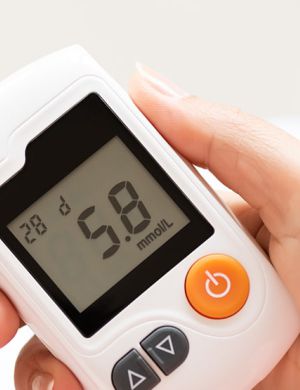
FDA, EU, and Asian Cosmetics Testing Requirements: A Comparative Analysis
Cosmetic regulations are a critical aspect of the beauty industry, ensuring that products are safe for consumers and compliant with national and international laws. However, the cosmetics testing requirements differ significantly between regions such as the United States (FDA), the European Union (EU), and Asian markets like China, Japan, and South Korea.
Understanding these differences is essential for cosmetic brands looking to expand globally. This guide provides a comparative analysis of FDA, EU, and Asian cosmetics regulations, highlighting key compliance factors and how a cosmetic regulations database can simplify the process.
1. The Importance of Cosmetics Testing Regulations
Cosmetic products can contain thousands of ingredients, some of which may pose potential health risks. Regulatory bodies establish cosmetics testing requirements to ensure that products are safe before they reach consumers.
Why Compliance Matters
- Protects consumers from harmful ingredients
- Prevents allergic reactions and skin sensitivities
- Ensures brands maintain product integrity and avoid recalls
- Facilitates global market expansion without legal hurdles
How a Cosmetics Ingredients Database Helps
A cosmetics ingredients database provides comprehensive information on approved, restricted, and banned substances across different regulatory bodies. This ensures that manufacturers formulate products that comply with regional laws before market entry.
2. FDA Cosmetics Testing Requirements (USA)
In the United States, the Food and Drug Administration (FDA) oversees cosmetics under the Federal Food, Drug, and Cosmetic Act (FD&C Act). However, unlike the EU, the FDA does not require pre-market approval for cosmetics, except for color additives.
Key Regulations in the USA
- No Pre-Market Approval: Unlike drugs, cosmetics do not need FDA approval before entering the market.
- Ingredient Restrictions: The FDA bans certain ingredients like bithionol, mercury compounds, and chloroform.
- Voluntary Testing: Manufacturers are responsible for ensuring their products are safe through self-imposed cosmetics testing requirements.
- Labeling Compliance: The Fair Packaging and Labeling Act (FPLA) mandates accurate ingredient labeling.
- Animal Testing: The FDA does not prohibit animal testing, but many brands follow cruelty-free practices voluntarily.
How to Ensure Compliance in the US
- Utilize a cosmetic regulations database to check ingredient restrictions.
- Conduct independent product safety assessments.
- Follow Good Manufacturing Practices (GMP).
- Label products correctly according to FDA guidelines.
3. EU Cosmetics Testing Requirements
The European Union (EU) has some of the strictest cosmetics testing requirements globally. Governed by Regulation (EC) No 1223/2009, all cosmetics must undergo safety assessments before being sold in the EU market.
Key EU Regulations
- Pre-Market Approval: Unlike the FDA, the EU requires a safety assessment by a qualified professional before marketing any product.
- Banned Ingredients: The EU has banned over 1,300 ingredients, including parabens, formaldehyde, and lead compounds.
- Mandatory Animal Testing Ban: Since 2013, animal testing for cosmetics has been completely prohibited in the EU.
- Cosmetic Product Safety Report (CPSR): Every product must have a safety report before sale.
- Responsible Person (RP) Requirement: A designated individual must ensure compliance with EU regulations.
How to Ensure Compliance in the EU
- Use a cosmetics ingredients database to verify banned substances.
- Conduct toxicological safety assessments for all products.
- Appoint an EU Responsible Person (RP) for legal compliance.
- Ensure Good Manufacturing Practices (GMP) adherence.
4. Asian Cosmetics Testing Requirements
Asia is home to some of the largest beauty markets, including China, Japan, and South Korea, each with distinct cosmetics testing requirements.
China’s Regulations (NMPA)
China’s National Medical Products Administration (NMPA) enforces strict regulations.
- Mandatory Pre-Market Registration: Imported cosmetics must undergo NMPA approval.
- Animal Testing: Until recently, all imported cosmetics required mandatory animal testing. However, in 2021, China exempted some general cosmetics from this requirement.
- Ingredient Approval: The NMPA maintains a cosmetics ingredients database with restricted and prohibited substances.
Japan’s Regulations (PMDA & MHLW)
Japan regulates cosmetics under the Pharmaceutical and Medical Device Act (PMDA).
- Categorization of Products: Products are classified as cosmetics or quasi-drugs, with stricter testing for the latter.
- Ingredient Safety: Japan maintains a list of approved and restricted ingredients.
- Self-Regulation: Many manufacturers voluntarily adhere to non-animal testing methods.
South Korea’s Regulations (MFDS)
South Korea’s Ministry of Food and Drug Safety (MFDS) oversees cosmetic regulations.
- Functional Cosmetics Approval: Sunscreens, anti-aging, and whitening products require pre-market approval.
- Animal Testing Ban: Since 2018, South Korea has banned animal testing for cosmetics.
- Ingredient Regulations: The cosmetics regulations database helps brands track approved and prohibited substances.
How to Ensure Compliance in Asian Markets
- Check ingredient restrictions using a cosmetics ingredients database.
- Submit pre-market approval applications where required.
- Follow updated animal testing regulations.
- Ensure compliance with local labeling laws.
5. Comparative Analysis of FDA, EU, and Asian Regulations
| Regulatory Body | Pre-Market Approval | Animal Testing | Banned Ingredients |
| FDA (USA) | No (except color additives) | Allowed (but discouraged) | ~11 banned substances |
| EU (European Union) | Yes | Completely banned | ~1,300 banned substances |
| NMPA (China) | Yes (for imported cosmetics) | Previously mandatory (recent exemptions) | Previously mandatory (recent exemptions) |
| PMDA (Japan) | Yes (for quasi-drugs) | Largely banned | Restricted ingredient list |
| MFDS (South Korea) | Yes (for functional cosmetics) | Banned since 2018 | Restricted ingredient list |
6. The Role of a Cosmetic Regulations Database in Ensuring Compliance
Navigating global cosmetics testing requirements can be overwhelming. A cosmetic regulations database provides a centralized platform for tracking ingredient restrictions, testing mandates, and labeling laws.
Benefits of Using a Cosmetic Regulations Database
- Faster Market Entry: Reduces compliance delays.
- Accurate Formulations: Ensures ingredient safety before production.
- Regulatory Updates: Keeps brands informed of changing laws.
Conclusion
Global cosmetics testing requirements vary widely across the FDA (USA), EU, and Asian regulatory bodies. While the FDA offers a flexible system with minimal restrictions, the EUenforces strict pre-market safety assessments and an animal testing ban. Meanwhile, Asian markets, particularly China, Japan, and South Korea, have evolving regulatory landscapes.
For brands looking to expand internationally, using a cosmetic regulations database and a cosmetics ingredients database is crucial for compliance, ensuring safe and legal product distribution.
Looking for a reliable solution to navigate global cosmetics regulations? Check out Vistaar’s Cosmetics Regulations Database & Testing Requirements to streamline compliance, stay updated with changing laws, and accelerate your market entry.
Don’t miss out! Click here to stay in touch.
Categories
- Biopharma (58)
- Consumer Health (21)
- Cosmetics (11)
- Diagnostics (5)
- Digital Health (8)
- Food (2)
- Medical Device (112)
- OTC (5)
- Regulatory Intelligence (13)
- Standards (41)
Recent Blogs
Get the latest updates from Vistaar

CONNECT WITH US

Let's talk about how Vistaar can help you




